At least once in his life, all modern people were confronted with the problem of body parasites.The quantity and diversity of parasites, which in the literal sense of the word cannot live without us are simply huge.The parasites of the human body are used as a food and habitat source until they are completely exhausted, but without release their presence.
Parasites are microscopic or even several meters long, but even in this case, their vital activity in the body is not always felt.A person, in general, does not feel them, and does not even know about their presence in itself.In the meantime, they have been able to live in a human body for years and for decades, causing irreparable damage.
Parasites of the human body are a serious threat and pose a great danger to human health because they violate the work of internal organs and systems, failure in the work of the immune system, and interfere with full assimilation of useful substances, vitamins and minerals.In some cases, the situation is so serious that it can even lead to death.
Types of relationships between organisms
There are several relationships between organisms in nature that have a diverse effect on each other.
The effect of one species on the other can be neutral or positive and can be negative.
In addition, there are different combinations of such relationships.Discrimination:
- symbiosis;
- neutralism;
- antibiosis.
Symbiosis is a form of relationships between the two organisms, both of which improve.
Neutrality is a biological connection that consists of two organisms in one area, but at the same time they are not connected and do not directly touch each other.
Antibiism is an antagonistic type of biological relationship in which one type of population limits the other's capabilities and adversely affects it.One of the negative types of antibiism is parasitism.
Parasitism and parasites
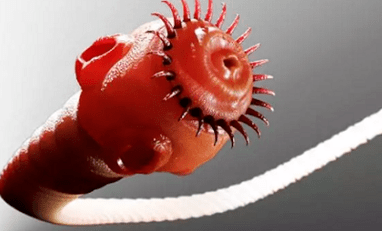
Parasitism is a form of antibiotic in which representatives of one species use another species as a temporary or constant environmental environment and a source of nutrients.
At the expense of the other organization, biological organisms are called parasites.
Parasites do not kill their owner, but use it for a long time as a source of food and habitat.
Parasites include:
- parasitic worms;
- pathogenic bacteria;
- Protozoa;
- mushroom;
- Viruses.
The hosts may be:
- bacteria;
- Protozoa;
- plants;
- animals;
- Human.
In the development process, parasites transfer many stages of development to eggs and larvae to adults (sexually mature, invasive), which indicates their long lives and should be replaced by 2-3 owners.
Classification of parasites
All parasites are divided into bonds and optional.
Parasites outside the host of the host either die or exist in an inactive state.For example: viruses.They only live a parasitic lifestyle, that is, they completely depend on the owner and activate their activities.
Optional parasites lead a parasite lifestyle, but can exist in a completely normal form in the external environment if necessary.For example: pathogenic fungi and bacteria.
It is divided by the nature of the relationship with the host body:
- Real parasites;
- false parasites;
- Super parasites.
The real parasites are the same Bond parasites where the parasitic lifestyle is the only form of survival.There are parasites that can be bonding (constant) and optional (temporal).For example: lice, fleas, intestinal news.
False Parasites - Volunteer Living Organisms that randomly enter the body to live and harm for a while.For example: the larvae of a room fly in the bow.
Super parasites are parasites living in other parasites.For example: bacteria and viruses in other parasitic insects that live in other organizations.
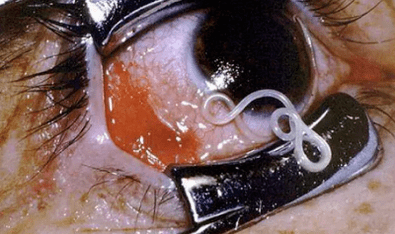
Depending on the duration of interaction with the host:
- Constant parasites;
- temporary parasites.
Constant parasites are organizations that perform their entire life cycle in the body - the owner and put down the larvae.For example: ascarides, tapworms, lice.
Temporary parasites;Live and eat at the expense of the owner at a certain stage of development.For example: Fore-Fart and an image (adult insects) larvae and mosquitoes.
The parasites are distributed at the host:
- ectoparasites;
- Endoparasites.
Ectoparasites are organizations that live on the owner of the host.For example: lice, fleas, ticks.
Endoparasites are organizations that are located in the host body.Endoparasites are divided:
- internal parasites;
- tissue parasites;
- intracellular.
Intra -gravel parasites are organizations located in cavities related to the external environment, such as Ascaris, Vlasov, in the human gut.
Tissue parasites-some kind of organisms located in the closed cavities and tissues of the host, for example: liver bacon, ribbons cystics.
Intracellular parasites are localized in the cells of the body - for example, the owner: malaria plasmodia, toxoplasm.
Parasites in terms of distribution in the environment:
- Curling, he met everywhere;
- Tropical, which are only common in the hot, tropical climate.
According to biological and epidemiological characteristics, parasites are distributed:
- Geogelminters- these are parasites that initially receive a stage of development in the human body and then in the external environment (such as Earth);
- Biogelminters- Parasites in which the development cycle takes place not only in the human body but also in the organism of other beings.A person, usually the final owner, and sometimes intermediate.
- Pick up the contact with the helmintsThey are distinguished by the body of the host, which can be used to repeat the infection or infection of another person (autoinasia, re -launch).
How the parasites fall into the human body
Many favorable factors contribute to the entry of parasites into the human body:

- dirty hands;
- animal hair;
- poorly cooked products (nutrition factor);
- Contact household factor;
- can be transferred;
- Perkutan.
Dirty hands are the main source of infection of parasitosis.There are many diseases called "dirty hands".The larvae of worms, which first fall on the skin of the hands and then cause characteristic symptoms from the stomach tract.The transmission path of these infections is called Fecal-oral.Thus, the contact helminthiasis helmits fall into our bodies.For example, ascaride eggs enter the human body through dirty hands, poorly washed vegetables, fruits, berries, and flies.
Animals and their wool are the sources of ascaride and liphyli with worms.For example, for a long time, which has fallen from the animal's wool, it retains vitality (up to 6 months) and falls on carpets, things, bedding, children's play and hand.
In addition, wet breathing can help dogs and cats disperse the parasitic eggs at a distance of 3-5 meters.In addition, there are fleas on dogs and cat wool, which also tolerate worm eggs.
We do a nutritional method of infection with parasites:
- poorly washed through vegetables and fruits;
- poorly cooked food (most often meat);
- Infected water.
For example, poorly cooked grill, jerking or homemade strip can infect a person with trichinellosis and echinococcal, and cause poorly cooked, dry fish or caviar infection with opisthorchiasis and wide tape.
The transmission method of infection is done using blood -sucking insects, for example: ticks, mosquitoes, lice, fleas, defects.
Contact - The household path of the infection is carried out through an infected person or an animal when household items are contacted or used.
The percutaneous method of infection occurs during bathing in reservoirs or contact with infected soil.The larvae penetrate into the body while contacting water or infected soil through the mucous membranes or human skin.
The characteristics of the device
Almost all parasites are very adapted to survival.Many factors contribute to their high viability:
- Long life.For example, helmits have been living in the human body for years and sometimes just as much as the owner.
- Helmin eggs have been able to survive for decades and do not collapse in the external environment.
- The phase of the parasite also contributes to its life expectancy.In the event of a lack of nutrients, it transmits all stages of development from eggs, continuing to change the larvae and the owner.
- The ability of parasites to cause immune deficiency in the owner, which allows the penetration of pathogenic agents from the outside, and "irritable" sleeping internal infections.
- Helmints that fall into a person's gastrointestinal tract create anti -enzymes, which allows them to give their own death, while breaking the normal meal and causing toxico allergic reactions in the host: asthma, urticaria, dermatitis.
- The inviolability of parasites is related to the exchange of genetic information during sexual reproduction, leading to the stability of their heterogeneous population.
- The broad vitality of helmints in many habitats: soil, water, animals, plants.
- Lack of effective methods of immunoprophylaxis, as parasites are able to suppress or modify the host's immune response.
How to identify parasites in the body
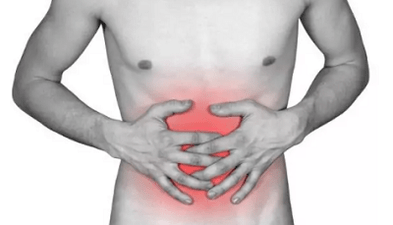
As a general rule, someone asks such a question when their health is thoroughly undermined.It is common for a person to reject the problem in the initial stages until it becomes a serious form and affects his well.
Because the parasites are divided by the habitat of the body - the owner into endoparasites and ectoparasites, the symptoms are divided into internal and exterior.
Ectoparasites are characterized by a certain activity that is expressed by the following symptoms:
- rash;
- itchy;
- burning;
- hyperemia;
- pain (if it was bite);
- The presence of a wound in the bite site.
The detection of endoparasites is much easier.To do this, the following measures are taken:
- visual identification (if they penetrate the skin outside);
- Microscopic examination.
The discovery of ectoparasites is a difficult task because in the evolution process the "dependents" adapted to survival while disguising and betraying themselves, doing destructive work in the host's body.After all, for example, a person, such as worms, has been living, and their stages of development can last from several months to a decade.So how can I determine the presence of parasites in the body?
External and internal manifestations
Because parasites differ in long life and actively reproduce in the human body, they cause symptoms that are long -term recurring and chronic.
External manifestations of parasitic activity are as follows:
- rash;
- itchy;
- burning;
- hyperemia;
- feverish condition;
- Quincke edema.
It is important to know that the degree of allergy development depends on many factors:
- the location of the parasite in the body;
- parasitic contact with tissues and vital organs;
- The amount of toxins produced.
The following symptoms include violation of the body of the internal invasion:
- disorders in the work of the stomach tract (nausea, diarrhea, clamp);
- weight fluctuations associated with nutrients and decrease in appetite;
- Due to the desire for sweets due to metabolic disorders and the general weakening of the body;
- chronic fatigue syndrome, which is generally tired, drowsiness, in some cases insomnia, harmful concentration and memory;
- constant headache caused by the weakness of the body and intoxication;
- Teeth are especially manifested in a dream (bruxism) in children;
- swelling of the limbs;
- nerve disorders and psychological disorders as parasites can cause depression and irritability;
- paroxysmal cough;
- muscles and joint pain;
- painful pale skin;
- skin damage (dermatitis, eczema, acne and acne).
It is especially important to get to know the general symptoms that are observed with the bowel parasite invasion.
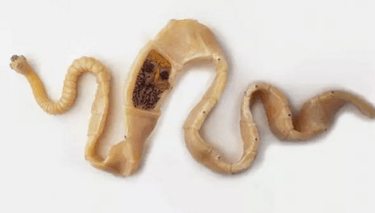
Infringements in the digestive tract show the following symptoms:
- intestinal cramps;
- irritable bowel syndrome;
- bloating;
- constipation or diarrhea;
- Changing the color of the stool;
- itching in the anus;
- Visual perception of helmat patterns;
- The presence of worms in the gag.
Because worms can be significant in the body, they are able to physically complicate stool progress and violate the work of other organs such as bile ducts.
Parasites may violate the work of a particular organ or system.
The most common violations are as follows:
- Anemia.
- Injuries of the central nervous system.
- Abscesses in the liver.
- The purulent inflammation of the gallbladder and the pancreas.
- Fruits in the work of immunity until autoimmune reactions develop.
- Disorders in the operation of the respiratory system.
- Joint diseases.
Diagnosis of parasites
Each of the above symptoms cannot always be able to accurately strengthen the presence of parasites in the body, as these symptoms can be observed with many diseases.
You can determine the presence of parasites in the human body when examining the stool.However, this method is unreliable because parasitic larvae cannot always be seen or missed by a microscope.In addition, not all parasites are eggs.
In order to detect parasitic larvae in stools, an analysis of up to 8 to 10 times must be performed.But if the analysis showed nothing, but the doctor has doubts, they will prescribe a number of serological blood tests that promote the detection of antibodies in the blood of the blood a few weeks after infection with parasites.
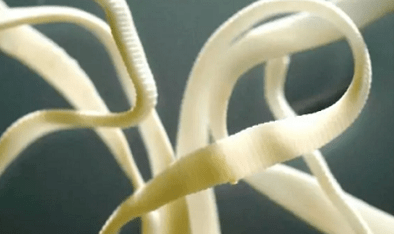
There are other methods to identify the "dependents" as the string called SO.Through the nose, a string with a capsule is inserted into the gut and after four hours it is removed with the samples obtained.
Another method is a colonoscopy in which the specialist examines the condition of the inner surface of the colon using a special probe.
Experts have found that the most common parasites are the helmin.In addition, they are all very viable and fertile, and their goal is to destroy their master and to bring out maximum benefits for themselves.
How to remove parasites from the human body
It is difficult to get rid of the parasites, but this is possible.It is important to make it a priority: not only do you need to know how to get rid of parasites, but also understand what the treatment process is.Are carried out in three directions:
- Destruction of parasites at all stages of existence.That is, not only adults, but also larvae and eggs must be destroyed.
- Normalization of the work of all organs and systems of the body.
- The restoration of the body.
To meet all three elements above, it promotes modern drugs based on plant parts that are prescribed by a specialist.
Such drugs are modern drugs and have some therapeutic effect.The use of these drugs in the complex allows you to combine the therapeutic effect and achieve wonderful results.
The dosage and combination of drugs are done with each other:
- Stages of parasite invasion;
- the general condition of the patient;
- the availability of complications from a particular body;
- The severity of the disease process.
The priority of Anthelmintic drugs is based on:
- efficiency;
- security;
- The possibility of combining multiple drugs for the best therapeutic effect.
Treatment with folk drugs is a very effective way to get rid of parasites.Most often, heating tea is used, which neutralizes the harmful effects of parasites, cleans the liver and gallbladder.
The tea is prepared as follows: Take a tablespoon of the following plants: oak bark, buckthorn, worm, tansy.Then pour a tablespoon of vegetable mixture with 500 ml of boiling water and leave overnight in a closed container.In the morning, on an empty stomach, 100 grams of the resulting tincture are drunk.The treatment continues for two to three weeks.
Pumpkin seeds are also very effective in fighting parasites.To get rid of the parasites, 300 grams of pumpkin seeds are picked up, cleaned, but at the same time leave as many transparent films that cover the seeds.The seeds should be eaten in the morning.This recipe not only eliminates parasites, but also improves the function of the intestine, stomach, liver and gallbladder.





















